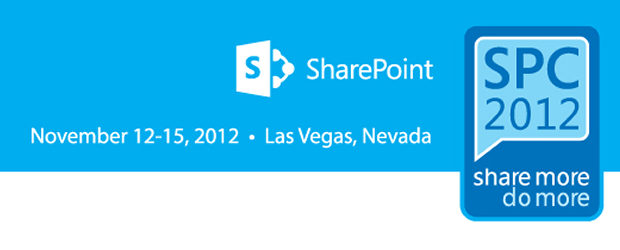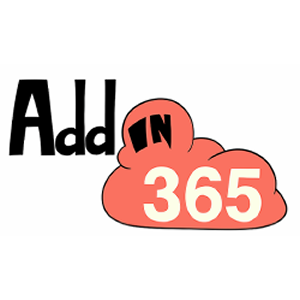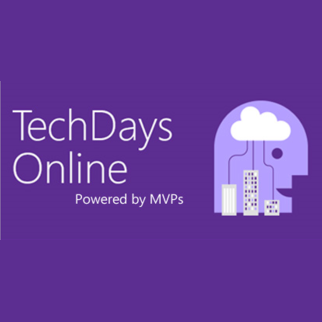Rolando introduces the new investments by Microsoft for Apps for Office. This session is a deep dive into how to create apps in Excel, Word and PowerPoint.
Common App Architecture
The diagram shown highlights the architectural structure of the app model. The Office 2013 also contains a client side API. This allows apps to interact with the office content.
The session focus is on the client side logic so the:
App containing the HTML/CSS/JavaScript
Office JavaScript
Apps for Office – Recap
Web Page + App Manifest = App
Core concepts
- 3 shapes, Task Pane, Content and Mail shape
- Multi-platform and Cross App
- Excel (web/desktop)
- Outlook (Web/Desktop/Mobile Web)
- Word (Desktop)
- PowerPoint (Desktop)
- Project (Desktop)
- JavaScript API
- Runtime sandbox
It is important to note that Apps for Office are agnostic to its host and is a core principle.
Principles
Cross Platform – designed from the ground up, providing abstraction, is async. Microsoft have not ported the old APIs (COM or .Net) into JavaScript they have built this from the first principles.
Cross App – common objects and methods across apps (selection, tables, settings) Principle is to present the office suite to a developer consistently and not really concern them whether they are in Word or PowerPoint. A selection is a selection.
Compatibility -Office version to version
Web standards – ECMAScript 5 e.g. Property get/set, strict mode, plain JS objects
Performance – async, limits. Things will be shut down which sap performance
Office JavaScript API Overview >
The diagram shows the hierarchy
- Office.context
- Document
- R/W selection
- Bindings
- Settings
- CustomXmlParts
- Mailbox
- Item
- User Profile
- EWS
- Properties & Settings
- Project
- Project Info
- Tasks
- Document
This session will focus on the ‘document’ branch of the API
Demo
Basic Hello World example
Choose App for Office 2013 in VS2012
Demo app selection was all the Task Pane options
In the VS solution the Office App project is the top one, with the manifest file inside
Pressing F5 before any changes should run a working default code app
In the html there is a JS include for
<script src="../Scripts/Office/1.0/office.js"></script>
Which means the Office API is being included
But be aware that this file is actually on a MS CDN and this is actually commented out by default. So good practice is to change to use the CDN version. This will mean that as the API gets updated your app will get them.
The first step is to create the ‘Office.initialize’ function
This function is the runtime handshake, and the app will error if it is missing
For Excel, Word and PowerPoint the document object is the most important object to start from
To change the run client you can change the ‘start action’ to the client you want
You can change the type of data you can interact with you use the ‘coercionType:Office.CoercionType’ which allows you to set things like html, openXML etc.
During the demo Rolando used a snippet of html for bold text, enetered it into the task pane app and set data pasted it into the doc as bold text. Proving the API can interpret the html into the document.
Note: You can change the html during debugging if you just click save and F5 in the app window
Demo of the OpenXML and its power
This is very useful where you have complex information content.
Org chart example showed how the app can interact with OpenXML to fill an orgchart form data in the app
Bindings Example
Bing map example bound to the data
The project is a Content app
Used the OOTB Bing Map scripts
Technique: In Office Apps the JavaScript ‘alert’ has been suppressed so as a developer you need to implement somewhere to show messages and debugging markers.
Note: the selection supports text/matrix and tables
Demo showed a basic map insertion and setting pins on the map based on selection of cells
To add a binding to the document call into the ‘Office.context.document.bindings’ object
To have the content app react an event handler needs registering
This can then react and make the app change based on whether data or selections have changed.
Settings example
Code example:
_doc.settings.set("mode", _mode);
_doc.settings.saveAsync();
Which persists the mode setting of the app into the document.
Technique: think about this state persistence for you apps, as a usability aspect it would be important
Custom XML Parts
A hidden and powerful feature in Office
These were introduced in 2007, documents can store islands of xml data, these are called custom XML parts within a document file.
Content Control Binding to parts
Word has content controls, these have been around since 2007 , these controls act as containers for specific kinds of content. Content controls can be mapped to nodes within the custom XML part.
There is now a new repeating section content control. This control provides the capability to bind to a collection of nodes.
Note: How to enable the Word developer tab, Backstage >> Options >> Customise Ribbon >> Right hand list has the ‘Developer’ and check it.
The developer tab allows the viewing and editing of the XML mapping pane
You can add a new part from that task pane.
Once the content is inserted into the xml mapping pane, you can right click and choose ‘insert content control’ and select the type of control you need.
Word also now has a repeating content control. So you can create a table, insert values from the XML and then highlight the entity and insert a repeating control to make it repeat for the length of the entity array.
Of course the example was done manually, but it can be done via the app code as well. This becomes powerful to embed data into the document.
Example used was an invoice document bringing in the data from another service. This is a very cool use case.
Operations that can be performed
- Add/Delete custom XML parts
- Get XML parts
- Get/Set node values
- Event handlers for node deleted, inserted, or replaces
Core objects for working with custom XML parts
- CustomXmlPart
- CustomXmlParts
- CustomXmlNode
- CustomXmlPrefixMappings
Connecting to SharePoint
How Apps for Office relate to SP
Now that Office365 contains Office, Exchange and SharePoint developers can now take advantage of this to create very complex solutions which span these technical capabilities.
Example is a simple task pane app which works in Word or Excel called ‘SPLister’
What this demo app does is allow the selection of any table that exists in the document, and then automatically generate a SharePoint list of it.
A key note is that the app needs to be told the SP url
The demo app is running from Azure so it will need to get into SP via Oauth
When invoked SP realises and asks the user to trust that app via Oauth consent flow page
Once SP issues the app with its access token it can start to communicate to the app.
The app is using the client side OM to create the list.
The demo app has both client and server side code. This was a little frustrating as it would have been great to see this being a JavaScript only hosted app.
Showed the ‘Seller Dashboard’ and the client ids
The ‘client id’ is the id which allows you permissions to request access to SharePoint in Office365
Code example for initialising the authentication to SharePoint.
function initAuthFlow(siteUrl, inSameWindow) {
authorizeUrl = siteUrl + "_layouts/15/OAuthAuthorize.aspx?IsDlg=1";
authorizeUrl += "&client)id=" + $("#clientId").val();
authorizeUrl += "&scope=Web.Manage";
authorizeUrl += "&response_type=code";
authorizeUrl += "&redirect_uri=" + $("#redirectUrl").val();
authorizeUrl += "&state=" + siteUrl;if (inSameWindow) {
//Perform authorization flow in this window
window.location = authorizeUrl;
} else {
//Open a new window to perform the authorization flow
authWindow = window.open(authorizeUrl, "authWindow");
codeListener(); //Start listening for the auth code
}
}
This code will start the auth request, this allows the permission. The client id provides the identifier for the calling app. The code also requests the permissions it needs on SharePoint. The code asks for the auth code in the url and provides the call-back redirection url to send it too.
The example app has the handling logic for the returned auth code in the C# code behind of the aspx app page. The ‘TokenCache’ and ‘TokenHelper’ classes are used to handle storage of the returned token to reduce the need to keep asking for it.
Functional areas v’s App support summary
| Functional area |
Word |
Excel/Excel WAC |
PowerPoint |
Outlook/OQA |
Project |
|
Get/Set data as text, table, matrix |
X |
X |
X |
|
X |
|
Settings |
X |
X |
X |
X |
|
|
Get File |
X |
|
X |
|
|
|
Bindings |
X |
X |
|
|
|
|
Custom XML Parts |
X |
|
|
|
|
|
Html and OOXML |
X |
|
|
|
|
|
Mailbox |
|
|
|
X |
X |
Resources
Summary
A good overview into the power of Apps for Office. It was disappointing that the question of how to host them within SharePoint (not AZURE) remained unanswered. I’m guessing that an ‘auto-hosted’ SharePoint app might be the answer, but only some trial and error will confirm that.





